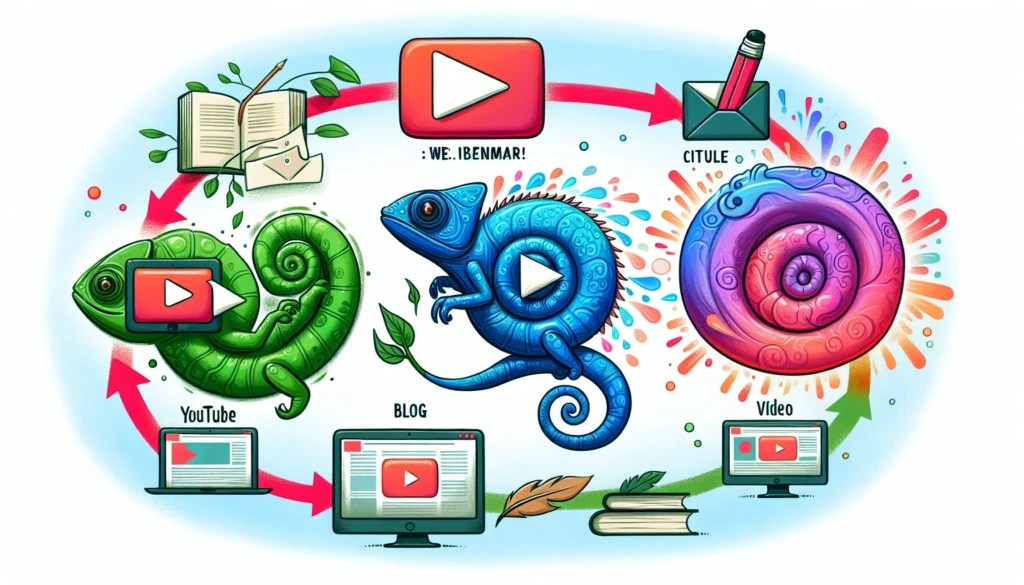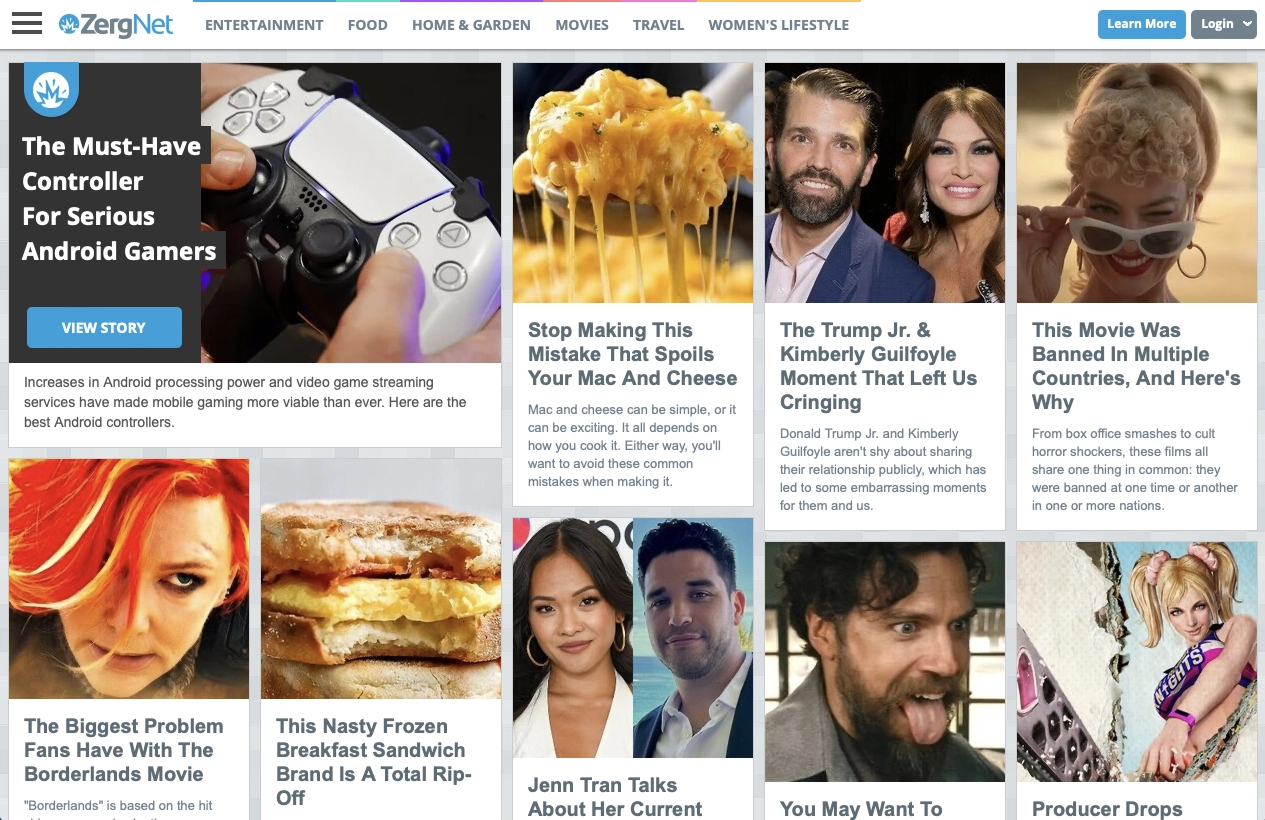Table of Contents[Hide][Show]
- Understanding Content Repurposing
- Benefits of Repurposing Content
- Identifying High-Performing Content for Repurposing
- Transform Blog Posts into Social Media Snippets
- Create Infographics from Written Content
- Turn Webinars into Video Tutorials
- Convert Blog Posts into Ebooks and Guides
- Repurpose Podcasts into Blog Posts
- Utilize Internal Data for Case Studies
- Republish Content on Third-Party Websites
- Group Similar Content into Comprehensive Resources
- Visualize Statistics for Social Media Posts
- Create Short-Form Videos from Long-Form Content
- Optimize Content for Different Platforms
- Measure the Success of Repurposed Content
- From My Experience
- Conclusion
- Related Articles:
Content Repurposing means transforming existing content into different formats to reach different audiences and extend its life. This article will show you how to repurpose content to save time, increase engagement, and reach more people.
Understanding Content Repurposing

Content repurposing or “content recycling” is the process of converting existing content into different formats to extend its relevance and usefulness. This strategic content marketing approach can take many forms, including:
Turning a blog post into a video
Turning a webinar into a downloadable guide
Creating an infographic from a research report
Transforming a podcast episode into a blog post
The idea is to adapt your content to different platforms and audiences so it continues to deliver value long after it’s first published.
One of the benefits of content repurposing is that it increases engagement. By presenting the same content in different formats, you can engage with different audiences on different platforms and meet their consumption habits. Some people may prefer to read blog posts, while others may like to watch videos or browse infographics.
Plus, recycling content is a resource-efficient technique, as it’s cheaper than creating new content. By integrating repurposing into the content creation phase, you can ensure your repurposed content conveys the same message but to a different audience.
Benefits of Repurposing Content
A significant benefit of repurposing is time efficiency. Instead of constantly coming up with new ideas, you can get more value from each piece of content by converting it into different formats and platforms. Repurposing existing content is an effective strategy to create content that resonates with diverse audience segments. This will help you maintain a consistent publishing schedule, which is a big time saver.
Repurposing content can also give you an SEO boost. Creating multiple versions of the same content can diversify your backlinks and increase the scalability of your content. This will improve your website’s search engine ranking and extend the life of your content by giving it multiple uses.
Another is to reach different audience segments. People consume content in different ways. Some prefer to read blog posts, while others engage with visual content like videos or infographics. By repurposing your content, you can meet these different needs and expand your reach.
In the end, repurposing content strengthens your overall content marketing. By not limiting valuable content to one post, you increase the effectiveness of your content strategy and regularly give your audience fresh content.
Identifying High-Performing Content for Repurposing
To get the most out of repurposing, you need to find content that performs and resonates with your audience. Evergreen content that remains relevant and interests the audience over time is perfect for repurposing. This type of content has a long shelf life and continues to engage long after it’s first published.
Tools like Google Analytics and ImpactHero can help you find top-performing content. In Google Analytics, go to:
‘Life cycle’ > ‘Engagement’ > ‘Pages and screens,’ In this area you can see metrics for every page and the most popular posts over the past year. ImpactHero allows you to see performance metrics for individual URLs at different stages of the funnel so you can find high-performing content.
Transform Blog Posts into Social Media Snippets
Converting blog posts into social media snippets is a powerful way to repurpose content and engage with your social media audience on Facebook and LinkedIn. Start by selecting your best blog posts that are interesting, timely, and informative. Use tiny snippets or small excerpts to create social media posts highlighting key quotes and stats.
For example, you can:
Create shorter summaries or excerpts for LinkedIn posts
Extract material to use as ad copy for social media advertisements
Post snippets of written content in relevant Facebook groups and on your Facebook page to engage readers and build your following
Remember to adapt the content to each platform and include a call to action to get people to read the whole thing.
Create Infographics from Written Content

Converting written content into infographics is a quick way to repurpose content and make the content and data more digestible. Infographics are known to be informative, easy to read, and shareable. They can turn the main points from a blog post into a visually appealing and shareable format.
Tools like Piktochart, Venngage, and Canva make it easy to create infographics. By using these tools, you can:
Convert visual assets from written content into infographics for platforms like Instagram and Pinterest
Enhance the visual appeal and clarity of your message
Properly designed infographics can also rank better in Google Images with the right alt text, further boosting your content’s visibility.
Turn Webinars into Video Tutorials

Turning webinars into video tutorials is a great way to expand your audience, fill content gaps, and give yourself a break from constantly brainstorming. Repurposing content for social media can further enhance your reach by adapting existing content for different platforms and formats. You can also turn webinars into blog posts or series of articles, share them as short videos on social media, or extract quotes for written content, trying new channels and formats that will resonate with your audience.
For example, you can repurpose webinars as YouTube videos and offer on-demand replays to increase views by up to 36%. Webinar tools like Contrast can extract transcripts, audio files, and chat history to create clips and snippets for repurposing and make creating YouTube video content from your long-form videos easier.
Convert Blog Posts into Ebooks and Guides

Converting blog posts into ebooks and guides is a powerful way to repurpose content and deliver in-depth information to your audience. Start by testing a topic with an initial blog post to see if the topic is worth expanding into an ebook. Combining multiple blog posts into one ebook gives you a cohesive narrative and makes gated content more attractive to readers.
Repurposed blog posts should be updated to keep the content current and accurate. Use blog posts as chapters to structure the ebook; each post should contribute to a specific section can be a great part of a blogging strategy. Ebooks can also be lead magnets to grow your email list and encourage readers to take further action after finishing the ebook.
The key elements of designing an ebook are:
The introduction, which should clearly state the value of the ebook.
The conclusion, which should provide actionable steps for the reader.
Simple design that enhances the content without overcomplicating the layout.
By turning an old blog post into an ebook, you can create a professional-looking lead magnet without spending a lot of time.
Repurpose Podcasts into Blog Posts
Turning podcasts into blog posts is a way to make content more accessible and reach a wider audience. Choose podcast episodes with evergreen or highly appreciated content to repurpose into blog posts. Use AI-powered transcription tools like Fireflies to quickly convert podcast audio into written text.
Editing the AI-generated transcript ensures accuracy and aligns with your podcast tone and style. Structuring blog posts with introductions, subheadings, and visuals makes them more readable and engaging. SEO optimization of blog posts involves adding relevant keywords, meta descriptions, and internal and external links. This makes them more accessible for people with hearing impairments or non-native speakers.
Utilize Internal Data for Case Studies
Using internal data for case studies is a great way to create unique and original content that will appeal to publishers and readers. A case study is a persuasive piece of content that uses an example to prove a point, gaining more customers. Creating case studies can increase traffic and conversions.
By using internal data, a brand can position itself as an authority and increase operational transparency, which is increasingly valued by customers. Examples are sharing sales trends, customer behavior, and internal research. For instance, Groove shares its internal data and operational metrics on its blog to build transparency and trust with its audience.
Republish Content on Third-Party Websites

Redistributing content on third-party websites via content syndication networks, guest posting, and platforms like Medium or LinkedIn is a way to increase reach and visibility. Content syndication is republishing your original content on third-party platforms with permission and attribution. This can be done through full syndication, partial syndication, or RSS feeds.
Big companies like AOL and MTV use platforms like ZergNet (shown above) to promote their posts on relevant sites. These platforms help them reach their target audience and expand their brand visibility. Writing guest posts and publishing on Medium or LinkedIn is a common way to develop content on external websites. Effective content syndication can drive more traffic and increase your brand visibility.
To avoid duplicate content issues, using canonical tags on syndicated content helps preserve the SEO value of the original source. Content syndication networks get your blog posts in front of people who are reading related content. By republishing old blog posts on other sites without hurting SEO, you can repurpose blog content and give it new life.
Group Similar Content into Comprehensive Resources
Compiling related content into one resource is a great way to add more value to your audience. Here’s how you can do that:
Create a comprehensive PDF guide that covers the entire process.
Compile multiple blog posts on a related topic.
Enhance the value provided to readers by making it easier for them to find all the information they need in one place.
This will give your audience valuable content and make it easy for them to access and consume in just a few clicks.
Combining a series of blog posts into an ebook is another way to repurpose content. A resource library from related infographics can be a visual reference for your audience. Downloadable checklists can be a valuable companion to text-based content and a practical tool for your readers to use.
Visualize Statistics for Social Media Posts

Presenting statistics visually for social media platforms is a great way to share data and insights with your audience. Poll results and webinar chat questions can be repurposed into social media posts, asynchronous Q&As, blog posts, or videos. Turning data visualizations into microcontent, small visual snippets or charts can create multiple social media posts from one source.
Animated data visualizations, like GIFs, are a great way to grab attention in social media feeds and highlight important statistics. Interactive content like infographics can turn static data into clickable content that encourages user interaction and sharing. Using data visualizations in short video content or motion graphics can convey complex information in a visually appealing and shareable way.
Create Short-Form Videos from Long-Form Content
Converting long-form content into short-form videos is a great way to repurpose content on platforms like TikTok and Instagram Reels. It allows you to extract key takeaways and present them in a format your audience can consume easily. This allows you to reach a wider audience and keep your content fresh and engaging. Today you can even leverage some AI-Video Generation tools to speed up this process.
To create these videos, you can use apps like Instagram or InShot, which allow you to add effects and filters without watermarks. Setting a 60-second time limit means you can post across multiple channels. Adding music within each social media platform helps you use trending audio and avoid licensing issues. For example, Buffer shares Instagram Reels about their blogs on Instagram, promoting their content.
Optimize Content for Different Platforms
Content needs to be tailored for different platforms to reach and engage with your audience. When repurposing content, you need to adapt the format; for example, you can turn a blog post into an Instagram carousel or a LinkedIn article. Cross-posting is sharing the same content across multiple platforms without changes, whereas repurposing is adjusting the content for each platform.
Consider the audience and features of each social media platform when deciding on content formats. For example, LinkedIn’s text-friendly format allows for longer posts, while Instagram favors visual content. Adapt the language and use platform-specific features like hashtags to make the content more engaging. Add calls-to-action that send users back to the original content to keep them engaged.
Measure the Success of Repurposed Content
Measuring the success of repurposed content is critical to understanding its impact and effectiveness. Monitoring performance metrics ensures that your content repurposing is aligned with your business goals. Tools like Google Analytics and Semrush can track metrics like website traffic, conversions, and bounce rates.
Setting up goals in Google Analytics will measure how well-repurposed content meets targets like form submissions or resource downloads. Social media analytics tools will track engagement metrics like likes, shares, and follower growth to measure content performance. By comparing similar content types using KPIs, you can refine your strategy and optimize your content marketing.
From My Experience
Content is King when it comes to campaigning, traffic generation, and, ultimately, revenue generation. So, when it comes to repurposing content, I believe it is essential. My experience has shown that it’s highly effective. You need to recognize that not everyone consumes content and perceives each marketing channel the same way.
So, for example, repurposing content from highly fidelity graphic intensive marketing pieces to short consumable insights for personal email outreach might resonate with some buyers much more than others. These buyers want the personal touch vs a generic high-level corporate campaign with a broad value proposition to the masses. This is just one tactic I have seen that has been very impactful in my current company’s growth strategy and a very effective way to repurpose marketing content for sales.
A successful tactic I have used is repurposing a high-quality white paper in 5-10 ways and building a spiderweb of links (ensuring you always link back to the white paper). At the end of the day, content repurposing is akin to chumming the waters before deep sea fishing. You are effectively spreading the scent of your main bait (thought leadership) throughout many marketing channels and mediums that will help guide your fish (prospects) back to your gated content or your business in general.
Remember, everyone is unique and respond to different types of content different at different stages for the buyer’s journey, so making repurposing a core part of your strategy can be very impactful. I have seen the ROI of content production go up between 5-10x by leveraging this content repurposing strategy and I would encourage you to try it as well!
Conclusion
In short, repurposing content is a great way to extend the life of your existing content, save time, and boost your content marketing. By turning your content into different formats and maintaining a consistent publishing schedule, you can reach different audience segments. Using tools like Google Analytics and ImpactHero will help you focus your repurposing efforts on content that resonates with your audience.
The possibilities are endless, from turning blog posts into social media snippets and infographics to turning webinars into video tutorials and podcasts into blog posts. Each format has its own benefits and opportunities to engage your audience in new and interesting ways and lead them back to your business and increase your ROI. For more repurposing examples, check out Flori Needle’s article on Hubspot.
As you start to do this, remember to measure the performance of your repurposed content using metrics. This will help refine your approach and ensure your content marketing is effective and aligned with your business goals. Repurpose content and even update content with content curation while repurposing to get more value from your content and achieve your marketing goals.
Frequently Asked Questions
What is content repurposing?
Repurposing content, also known as content recycling, involves transforming existing content into different formats to extend its life and usefulness. It’s a great way to reach new audiences and extract more value from your existing content.
How will repurposing content help my SEO?
Repurposing content will help your SEO by creating diverse backlinks and scaling your content so your website ranks better in search engines. It’s a great way to get more reach and impact from your existing content.
What tools can I use to find high-performing content to repurpose?
You can use tools like Google Analytics and ImpactHero to find high-performing content to repurpose. By looking at metrics for each page and pinpointing top-performing content at each stage of the funnel, you can get started today!
How can I repurpose webinars into other content formats?
You can repurpose webinars into blog posts, social media snippets, YouTube videos, and on-demand replays. Tools like Contrast can extract transcripts, audio files, and chat history to create clips and snippets.
Can I repurpose user-generated content?
Yes! Repurposing user-generated content like reviews, testimonials, and social media posts can add credibility to your marketing. This type of content can be turned into case studies, social media posts, or even be featured in newsletters.
What are the common mistakes to avoid when repurposing content?
Mistakes include not tailoring the content to the platform, not updating outdated information, and not tracking repurposed content. Avoid these, and you’ll get the most out of content repurposing.
Related Articles:
- Blogging Statistics
- Webinar Statistics
- Blogging for Business Success
- Original Content is King in an AI World
- Viral Content
- Content Curation

 Content Curation Strategy Tips for 2024
Content Curation Strategy Tips for 2024